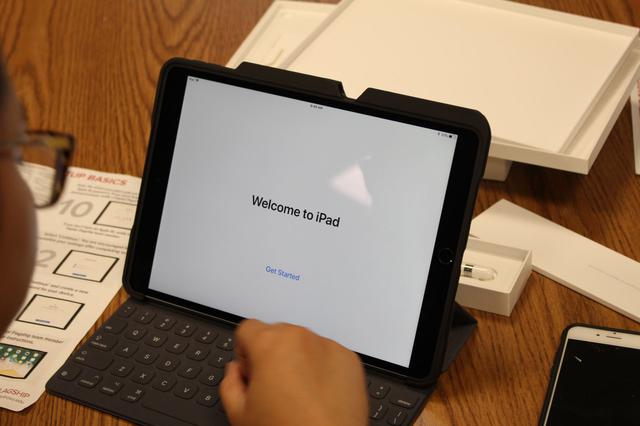After months of speculation, Ohio State University is changing its Digital Flagship technology program and ending iPad distribution to students, Executive Vice President and Provost Melissa L. Gilliam announced in a universitywide email Tuesday.
Digital Flagship, a collaboration between Ohio State and Apple, started in 2017 under former President Michael V. Drake with the intention to creating equitable access to technology among undergraduate students and to prepare them for a modern digital workplace. It was described then by the Dispatch as "the tech company’s most-aggressive collaboration with any university to date."
When the COVID-19 pandemic pushed thousands of students and instructors online all at once, Gilliam said, the need to adapt technology needs accelerated more than university leaders anticipated.
More:Intel CEO Patrick Gelsinger to speak at Ohio State's spring commencement
"As a result, the university has made the decision to evolve the Digital Flagship program and transition to a new suite of services designed to be more impactful and sustainable, and better meet the changing needs of students," she said.
No more iPads for incoming students
The biggest change to the program is the discontinuation of iPads to incoming students, a centerpiece of the original partnership.
Current students who have received iPads through Digital Flagship can keep them, but incoming freshman and transfer students will not receive one this fall.
Students who are currently eligible to receive an iPad but haven't yet received one have until the end of spring semester to pick one up.
Instead of students having their own iPads, the Office of Technology and Digital Innovation will provide loaner devices to students who need them.
When Digital Flagship began five years ago, the university encouraged instructors to integrate iPads into their courses, using them in class and developing their syllabi around the technology.

Now, Gilliam said Ohio State will take a "device-agnostic approach" by the beginning of fall semester.
Gilliam said Ohio State's "successful relationship with Apple will continue as we ensure instructional continuity," and the university is creating a new team to facilitate this new iteration of the Digital Flagship program.
Ohio State will also expand Adobe Creative Cloud access to all students in June as part of the new programming.
Additionally, the university is implementing "virtual desktop services" which will allow students to access specific software they need on any device from anywhere at no cost. Students will also have opportunities to earn microcredentials in "critical technology areas."
In January, university leaders sent an email to department chairs telling them to prepare for a change to Digital Flagship but would not confirm whether or not the iPad program would be going away.
Some faculty raised concerns about eliminating iPad distribution.
In the Department of Chemistry and Biochemistry, faculty wrote a paper titled “Impact of discontinuation of the digital flagship project on instruction in Chemistry and Biochemistry,” which warned that changes may disproportionately impact low-income students who can't afford expensive personal technology.
It also questioned what courses would look like that transitioned to a digital-first mentality as a result of the iPad program.
"It is all but impossible for us to go back to the past paper-based environment at this point, because we have entirely changed our structures and staff to reflect this new and modern approach to education," the document read.
University spokesman Ben Johnson told the Dispatch at the time that Ohio State was "considering modifications to the Digital Flagship program" and more details would be announced in the coming weeks.
Then in April, President Kristina M. Johnson told The Lantern, Ohio State's student newspaper, in an interview that the university may alter Digital Partnership to be a needs-based program rather than a universitywide initiative.
Ohio State will ensure students have access to technology
Over the coming academic year, Ohio State will ensure students have access to the technology they need, Gilliam said.
“Further, we will pilot new approaches, including a technology readiness survey for incoming undergraduate students and a refurbishing program that will extend the life of our existing devices to support more students,” she said. “We will work collaboratively with colleges and instructors to ensure instructional continuity during the transition. “
"This new approach will enable us to focus on technology access and skill building for all students in a more sustainable way, and I look forward to seeing what you will do with these new resources," Gilliam said.
Sheridan Hendrix is a higher education reporter at the Columbus Dispatch. You can reach her at shendrix@dispatch.com. You can follow her on Twitter at @sheridan120. Sign up for her Mobile Newsroom newsletter here and her education newsletter here.




